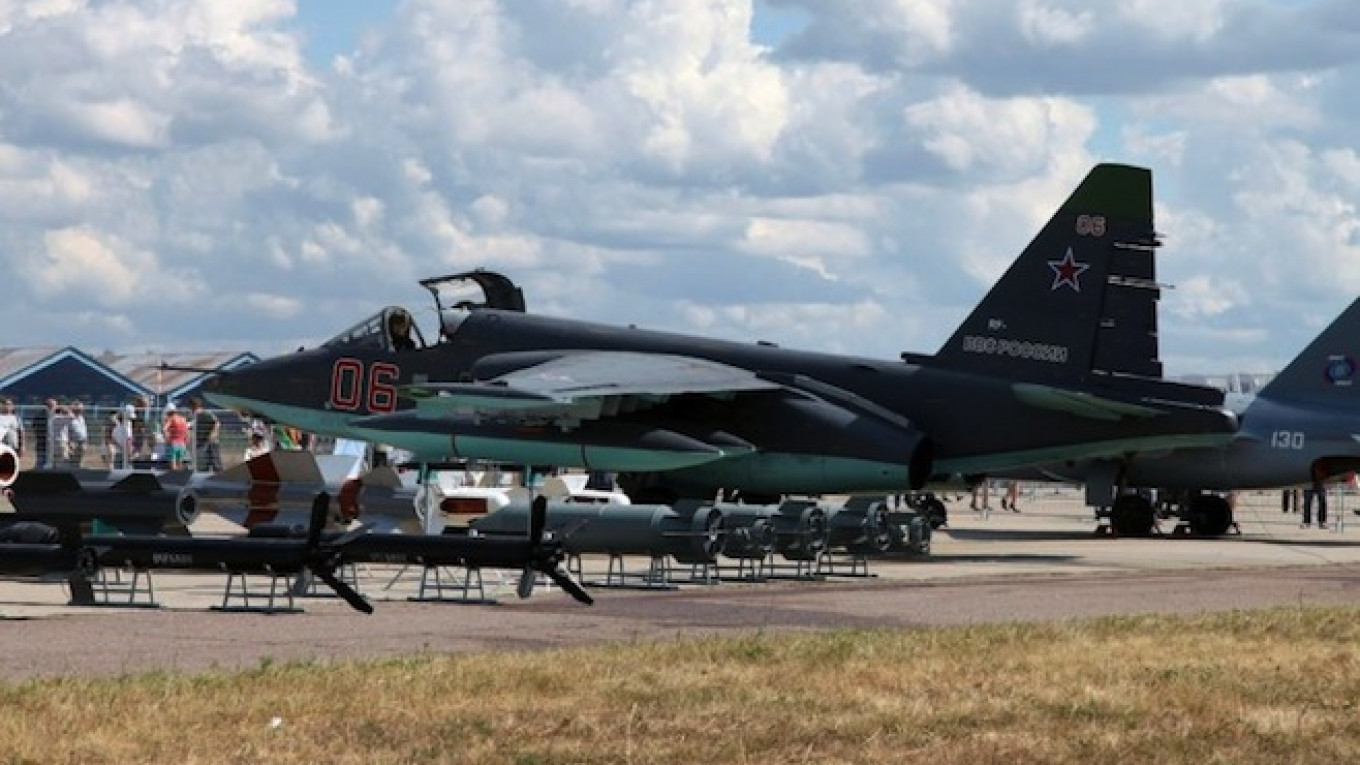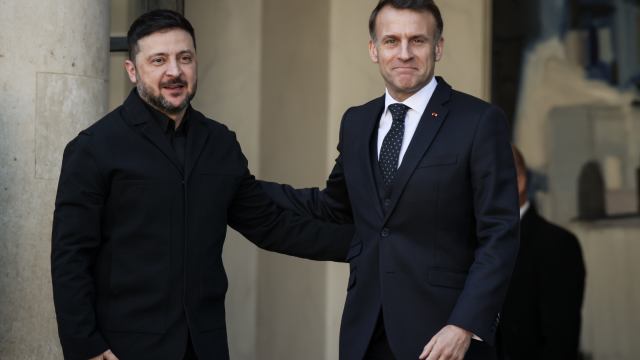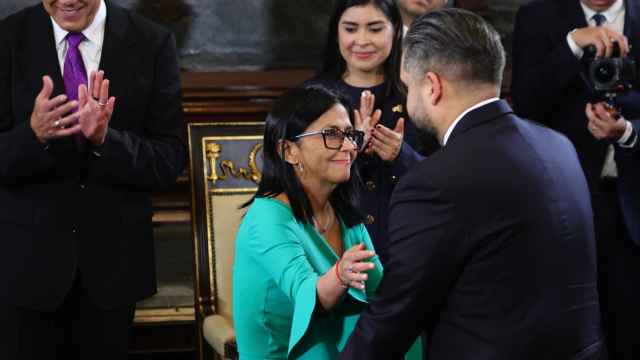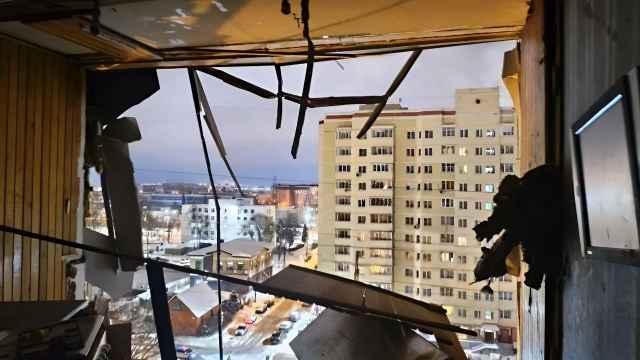Russian air strikes in Syria are costing Moscow up to $4 million per day, data collated for The Moscow Times by a defense think tank showed.
The figures by IHS Jane's show that bombing raids, supply runs, infrastructure and ground personnel — along with a salvo of cruise missiles fired into the conflict zone — have cost Russia $80 million-$115 million since strikes began on Sept. 30.
Compared to Russia's 3.1 trillion ruble ($50 billion) defense budget this year, that is small change. But the Kremlin could see its costs and commitments grow. Analysts warn that the conflict in Syria could drag on for years, and if soldiers die, Russian involvement could dramatically escalate.
Flying out of an airbase in territory controlled by Syrian President Bashar Assad, some 36 Russian warplanes and 20 attack helicopters have flown around 40 sorties per day for the past three weeks, according to the Defense Ministry, strafing targets belonging to rebel groups and the jihadists of the Islamic State.
Precise data is scarce, but media reports say servicing and protecting the air force are around 1,500-2,000 personnel on the ground, supplied via naval and air transport through the Black Sea and Iranian and Iraqi airspace. A handful of warships in the eastern Mediterranean adds extra reinforcement.
Each warplane costs $12,000 per hour to fly, and each helicopter $3,000 per hour, according to IHS. With the tempo of bombing runs keeping the planes in the sky for 90 minutes a day on average and choppers flying one hour per day, Moscow is spending around $710,000 every 24 hours, IHS said. Each day, they drop around $750,000 worth of munitions.
The military personnel cost around $440,000 per day to support, IHS estimates. Keeping the ships in the Mediterranean requires a further $200,000. Other supporting costs, such as logistics, intelligence gathering, communications and engineering, add $250,000 per day.
That means the minimum cost of keeping this operation going is $2.4 million per day. Those price estimations are conservative, said Ben Moores, a senior analyst at IHS, and the real cost could be close to twice as high.
The estimates do not factor in a ramping up of bombing raids, such as those seen in the second week of Russian air strikes, or use of ground-based weapons. They are far less than what the U.S. and Britain spent on their deployments in Iraq and Afghanistan. This is partly because Russia has less distance to cover to reach Syria, and also due to lower wages and cheaper supplies in Russia.
The estimates also exclude a cruise missile assault launched on Oct. 7 — President Vladimir Putin's birthday. Each Kaliber missile launched from Russia's Caspian flotilla cost $1.2 million, according to IHS. If the price of four missiles that the U.S. said crashed in Iran is added to the 26 that hit Syria, the salvo cost $36 million.
The Russian Defense Ministry did not respond to a request to comment on the cost of its operations in Syria.
What Are They Buying?
To an extent, Russia's intervention has been done on the cheap. Compared with the U.S.-led coalition, which has been bombing targets in Syria for more than a year, the Russian contingent is tiny. The operation is smaller than some of the war games practiced by the Russian armed forces in recent months.
Despite boasts that Russia is waging a high-tech precision warfare presented as in no way technically inferior to the U.S. campaign, few expensive weapons have been used. Aside from the cruise missile strike, most of the ordnance dropped in the country has been Soviet-made unguided bombs, of which Russia has plentiful stores.
The money spent has also been an investment. It has been a powerful propaganda tool, buying coverage in the world's media of the return of a global superpower.
It has allowed Russia to test new equipment in battle, and given its soldiers operational experience that will increase their battlefield capability.
And it has provided a vivid demonstration of Russian military equipment for prospective overseas buyers. Russia last year exported defense equipment worth $15.5 billion. A 1 percent increase in sales would be the equivalent of a month of spending on bombing Syria.
But these benefits are greatest early in a campaign, and become less relevant as the conflict drags on, said Vadim Kozulin, a military analyst at the PIR Center, a defense think tank in Moscow.
Is It Sustainable?
Although Russian officials have said their involvement in Syria is temporary, it is not clear how Moscow will extract itself from the four-year-old conflict.
Russian air strikes halted the slow weakening of the Syrian army by rebels and Islamic State fighters, but it is not clear whether Assad's government would be able to hold territory without Moscow's continued support.
What's more, Russia's intervention and the strengthening of its bases in Syria has raised the cost to Moscow of allowing Assad to lose.
The Islamic State has almost unlimited manpower, said Moores. "You can't defeat something that has an infinite pool of reserves … Every year, there are more and more young people in the Middle East [who will join up]."
"You're going to be doing almost daily air strikes for years, just to keep it balanced the way it is," he said. "A military victory is impossible."
So far, Russia's intervention has been loss-free. But Russian involvement in the conflict could easily escalate if servicemen are killed, or if planes or helicopters — themselves worth tens of millions of dollars — are shot down.
A drone worth $240,000 was downed by Turkey last week, and though Moscow has denied it, it almost certainly belonged to Russia, according to IHS Jane's.
Hard Times
Some analysts have drawn comparisons to the Soviet war in Afghanistan. But the Soviet Union had cash to spare when it sent its army into Afghanistan in 1979. Oil prices were high, and plentiful export revenues from crude could be funneled into the conflict.
Russia's intervention in Syria comes at the opposite end of the cycle. The price of oil is at its lowest in more than a decade, and the country is in a fiscal crisis.
The move also comes amid a wider increase in Russian deployments abroad. Moscow is expanding its bases in Syria, the Arctic and former Soviet republics, particularly in Central Asia, where it warns of a rising threat of terrorism spilling over from Afghanistan.
The Kremlin has said the money for the Syria campaign is coming out of the existing defense budget — one of the few departments to escape sweeping cuts this year — but the real source of funding is opaque, said Pyotr Topychkanov, an analyst at the Carnegie Moscow Center, a think tank.
It is a paradox, he said: Russia has mimicked U.S.-style publicity for its Syrian offensive, blitzing the press with glossy images and film of missile launches and bomb strikes and posting daily updates on Facebook and Twitter in multiple languages. But on the money issue, officials have been silent.
Social spending, in the meantime, is being reined in. The government is poised to abandon a pledge to raise pensions in line with inflation: Prices are set to rise by about 12 percent this year, but the Finance Ministry says it can afford to raise pensions by only 4 percent.
Finance Minster Anton Siluanov was quoted by the BBC as saying last month that every 1 percent increase in pension payouts costs 70 billion rubles ($1.1 billion) annually — roughly what Russia would spend in a year in Syria if its intervention continued at its current scale.
Responding to U.S. President Barack Obama's accusation to CBS News that Putin was "running Russia's economy into the ground," the Russian president said in a television interview on Sunday: "The tasks we are carrying out in the defense industry will push us into developing not just applied but also fundamental science and will have benefits for the entire economy."
New orders would be good for Russia's military-industrial complex, coming on top of 20 trillion rubles ($320 billion) being pumped into a state rearmament drive this decade.
But Russia has not yet seen the kind of military-commercial cross fertilization that led to the development of inventions like the Internet in the U.S., and with 20 percent of state spending going to defense, some analysts have said an unproductive military sector is squandering too many resources that should be invested in education and health care.
More immediately, cuts to pension payouts and public sector wages will also only exacerbate a slump in consumer spending that is contracting the economy.
So far, thanks to jingoistic coverage of the bombing raids in the state media, there is little sign that Russians are upset about any of this.
And anyway, cost is not an argument for the Kremlin, said Ruslan Pukhov, director of the Center for Analysis of Strategies and Technologies (CAST), a Moscow defense think tank.
"As we say in Russia, showing off is worth more than money," he said.
Contact the author at [email protected] and follow him on Twitter at @peterhobson15
A Message from The Moscow Times:
Dear readers,
We are facing unprecedented challenges. Russia's Prosecutor General's Office has designated The Moscow Times as an "undesirable" organization, criminalizing our work and putting our staff at risk of prosecution. This follows our earlier unjust labeling as a "foreign agent."
These actions are direct attempts to silence independent journalism in Russia. The authorities claim our work "discredits the decisions of the Russian leadership." We see things differently: we strive to provide accurate, unbiased reporting on Russia.
We, the journalists of The Moscow Times, refuse to be silenced. But to continue our work, we need your help.
Your support, no matter how small, makes a world of difference. If you can, please support us monthly starting from just $2. It's quick to set up, and every contribution makes a significant impact.
By supporting The Moscow Times, you're defending open, independent journalism in the face of repression. Thank you for standing with us.
Remind me later.






